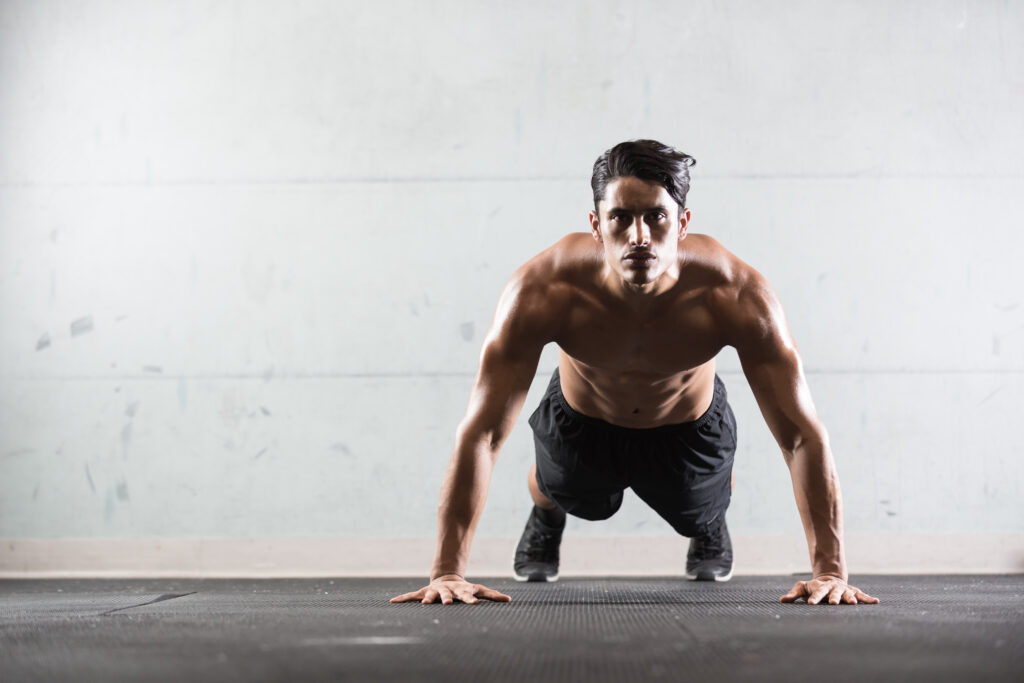You’ve seen the crazy photo of cyclist Pawel Poljanski’s insane leg veins after his 70-hour Tour de France pump. And the Rock boasts a pretty impressive bicep vein, too. Plus, go to any bodybuilding competition, and you’ll see a whole slew of guys with impressive vascularity as well.
What all these veiny guys have in common is that they are in tremendous shape. But is vascularity really a sign of superb fitness?
First, let’s take a look at the reason your veins pop in the first place.
Your arteries carry blood away from your heart to the tissues throughout your body, like your muscles. Your veins—which have thin walls and dilate easily—pump the blood back toward your heart.
“The venous outflow is slower than arterial inflow, causing a back-up of venous blood causing higher pressure in the veins,” says Doug McGuff, M.D., author of Body By Science. That increases pressure causes the veins to “pop” out. That’s the pump you get.
RELATED: Is Cardio Necessary For Super-Low Body Fat
But what you’re doing also plays a role in the pop, too.
“Swelling in the muscles pushes the veins out to the surface,” says Spencer Nadolsky, D.O., author of The Fat Loss Prescription. “Your muscles swell when working out and push the veins closer to the surface of your skin, which makes them more pronounced.”
You probably notice your veins popping more during weight lifting than when you’re simply taking a walk or doing other kinds of light cardio.
RELATED: The 3 Best Exercises For Burning Unwanted Belly Fat
In general, higher-rep weight lifting with fast concentric movements—say, the part of a biceps curl when you bring the weight up toward your arm—would trigger the biggest pump, says Dr. Nadolsky.
“High intensity interval work can produce this effect as well,” says Dr. McGuff. “Muscular loading and fatigue drive arterial inflow into the muscle, so exercise that triggers this will produce venous engorgement.”
Okay, so your veins tend to pop when you’re working out, but does how veiny you get actually depend on how fit you are? Well, sort of.
The leaner you are—meaning, the less subcutaneous fat you have covering your muscles—the more pronounced your veins will look, says Dr. Nadolsy.
But it’s not just about being lean: Having low body fat along with upped muscle mass is the magic combination for veins that pop, even when you’re at rest. So in some ways, pronounced veins are an indirect sign of fitness.
That’s because muscle has something called “residual tension at rest,” which provides some resistance against venous return, says Dr. McGuff. Your veins carry blood to the heart, and when you exercise, the increase in blood flow creates a sort of blood backup in your veins, creating higher blood pressure. That compresses the returning veins and causes the blood to dam up and engorge the veins at the skin surface. So the more muscle you have, the more residual tension at rest you have, which means your veins are become more dilated.
RELATED: If You’re Eating At This Time Of The Day, You’re More Likely To Put On Weight
“Combine that with a low level of body fat and the veins will really ‘pop’,” he says.
So yes, vascularity while you’re at rest can be a marker of fitness, but context is everything, Dr. McGuff says.
For example, sometimes vascularity can be a marker of excess stress, with increased secretion of the stress-hormone cortisol, or over-production of the hormone aldosterone, which causes your body to hang on to sodium. As a result, your body retains water and makes your veins swell, he says.
The veins can also be engorged due to damage, or because of varicose veins or haemorrhoids, Dr. McGuff says.
RELATED: 6 Signs You Might Have A Blood Clot
But your vascularity also depends on your genetics, too.
“Some may be very lean but with little vascularity and some can have more fat and still have some vascularity in cases,” says Dr. Nadolsky.
Bottom line, it most likely is a good indicator that you’re fit, but it’s not a given.
“You can be really fit and not have a lot of veins showing though,” says Dr. Nadolsky (Want to get fit fast? Try The 21-Day MetaShred from Men’s Health).
This article originally appeared on Men’s Health












